Although relatively unknown by those outside the music field, mellophones are an important part of any marching band or bugle corp. “The marching French Horn” is a mellow, middle-voiced brass instrument and there are a lot of brands and models available for those in search of the perfect horn.
After over 72 hours of research, 15 interviews with professional musicians, and 20 horns tested, we’ve come to realize that not all mellophones are created equally.
-
 $1,986.99Check on Amazon Check on Musician's Friend
$1,986.99Check on Amazon Check on Musician's FriendThis gorgeous silver plated or lacquered brass horn is perfect for players of all skill levels. The standard mouthpiece is the MP-14F4, made with excellent sound quality in mind.
06/29/2025 12:17 am GMT -
 Check on Musician's Friend Check on eBay
Check on Musician's Friend Check on eBayGorgeous mellophone with plenty of great sound and projection.
-
 Check on Amazon Check on eBay
Check on Amazon Check on eBayGreat choice for beginners, this one wowed us with its sound quality and appearance.
-
-
 $659.00Check on Amazon Check on eBay
$659.00Check on Amazon Check on eBayThe plating added warmth to its sound that the others didn't have, but not enough to change our minds on crowning.
06/28/2025 09:09 pm GMT -
One musician, a high school marching band director, was quick to point out that the quality of a mellophone lies in the combination of three major factors:
- What the horn is made of,
- What mouthpiece the player is using, and
- How well it holds intonation or tuning.
Another musician, who plays first chair French Horn in a small town symphony, held the strong opinion that the best mellophone would come from a well-established company that has had ample time for trials and errors while making the instruments. As it turns out, our research supports the statements of both gentlemen.
Despite a large number of mellophones on the market, only a handful really stand out above the rest.
This gorgeous silver plated or lacquered brass horn is perfect for players of all skill levels. The standard mouthpiece is the MP-14F4, made with excellent sound quality in mind.
How to Choose a Mellophone
Because the mellophone is such a lesser-known instrument, it is important to know a little about it before buying one. The mellophone is a three-valved brass instrument that is created in the concert key of F or E-flat.
Its origins stem from the 19th century when marching bands began to rise in popularity. It is known as a marching French Horn because it replaces the French Horn in mobile ensembles.
Because of the curvature of the instrument and the posture in which the player must sit, French Horns themselves are not usable in situations where the player must be moving. Unlike the French Horn, the mellophone has a bell that faces front, causing it to look much like an oversized trumpet.
Be aware that although its appearance is similar to that of the trumpet, cornet, and flugelhorn, the mellophone is its own instrument entirely.
Not only do they all have different sounds, trumpets, cornets, and flugelhorns are all keyed in concert B-flat, so if you are looking to purchase one of those the mellophone will not satisfy your need. Here is a video that demonstrates the differences in the sounds of the aforementioned instruments:
Mellophones belong to the brass family of instruments, due to the fact that they are traditionally made of brass. A common misconception is that they are always made of brass, however, that is no longer the case; alloy metals are often used to create cheaper, more budget-friendly models.
Anatomy of a Mellophone
Before you can make an informed decision on which mellophone is best for you, it is imperative to know all the different parts of the instrument and what each part does – especially if you are a beginner.
Mouthpiece
The mouthpiece is the most distinctive part of any brass instrument since this is where the power to play comes from.
Mouthpieces are most often detachable and come in different lengths, depths, and circumferences (all of which are factors that have the ability to change the tone of the instrument).
Lead Pipes
Lead pipes (also known as mouth pipes) are the section of tapered tubing that bridge the mouthpiece and the bore tubing of the mellophone’s body. Different models of mellophones have differently tapered lead pipes that can change the difficulty of usage in the individual instrument.
Bore Tubing
The term “bore” refers to the inside diameter of the body tubing, which determines the sound characteristics produced by the mellophone. The larger the bore of a brass instrument, the more physical exertion is required to play.
Bores not only vary in diameter but in shape within the brass instrument family. Mellophones hold conical bores, meaning that the tube gets gradually wider (more open) along its body length.
Valves
Valves are the button-like structures on which a player presses to change notes and tones on a mellophone. They work by opening or closing parts of the body’s tubing which in essence, changes the length of the instrument.
Mellophones have piston valves which means they pump up and down rather than working in a circular motion like French Horns. All valves require frequent thorough cleaning and lubrication to remain in good functioning order.
Slides
Valve slides on a mellophone are small pieces of moveable tubing located near the bottom of the valves, used to make small adjustments to the intonation of the instrument.
When the tubes are pushed in toward the body of the instrument, the pitch raises slightly. On the contrary, when the tubes are pulled away from the body, the pitch lowers.
Bell
The bell is the name of the flared opening from which the sound comes when playing. All mellophones have medium-sized bells that aid in their having a loud, mid-tone voice.
Material
What a mellophone is made of does not just impact the price; it also affects the sound of the instrument, which is unarguably the most important aspect when playing.
Brass
A brass-made mellophone is likely to have a richer, warmer sound (closest to that of a traditional French Horn) where an alloy horn could sound a bit more harsh and rough around the edges (more like a lower-pitched trumpet).
Silver
Silver or gold plated horns sound closest to brass while looking a bit more professional; take caution, though; these instruments require more cleaning care than brass or alloy to keep the metal from tarnishing.
Mouthpieces
When shopping for a mellophone, it’s important to understand that you could end up needing a different mouthpiece than the one that comes standard with your horn.
This is in part because of the individual shape of each player’s mouth, and the personal preferences of the player. The best mouthpiece is the one that allows your lips to buzz freely and air to flow forcefully through the instrument.
For some, this means using a trumpet mouthpiece. For others, mellophone-specific mouthpieces do the trick. According to John Ericson, the Professor of horn at Arizona State University, the Curry 1HTF is the best all-around mouthpiece.
It is a hybrid between the mouthpiece of a trumpet and that of a French Horn, offering the best qualities of each in one package. A good mouthpiece can make even a low-quality horn play at its best.
Intonation
Modern mellophones are typically keyed in F, even though much of the older available French Horn music is written in E-flat. This is because the music was composed for the French Horn’s predecessor, the natural horn, which had no valves to aid in note changes.
Technological advances made playing the horn much easier and eventually changed the key of the music that was written for the French Horn/mellophone.
When asked, musicians who have tried both modern and old mellophones generally favor the modern one because it holds its tuning better in different situations.
If the weather is hot and humid, the chances of tuning going sharp is high and the opposite is true of colder temperatures (as is true with all instruments). Due to the mellophone being used primarily for outdoor use, finding one that holds its tuning is of utmost importance.
Pricing
Before musicians invest in a new instrument, cost is often thought of first. While some mellophones are rather affordable at only a few hundred dollars, others can cost upwards of $2,000 or more.
Your skill level and the reason for use should help you decide your price point. A cheaper mellophone would be best suited for someone who is a beginner, whereas a more expensive one would be more likely to please someone with experience or even a professional.
Pricing is based on what the instrument is made of, which company makes it, the reactivity of the valves, the sound quality, and what it comes with (a plastic case versus a leather case, for example).
Our Top Pick: Yamaha YMP 204M
This gorgeous silver plated or lacquered brass horn is perfect for players of all skill levels. The standard mouthpiece is the MP-14F4, made with excellent sound quality in mind.
We sat down and tried 20 horns at a music shop one afternoon to find the best of our picks. Of all the mellophones we tried, the best by far was the Yamaha YMP 204M.
This gorgeous silver plated or lacquered brass horn (we tried the silver!) is perfect for players of all skill levels. The standard mouthpiece is the MP-14F4, which is made with excellent sound quality in mind.
This horn’s newly designed weight distribution and redesigned bell shape offer extreme comfort for the player, resulting in better overall sound and ease of playing.

Credit: Yamaha Corporation
In addition to the weight change, the first and third valve slides also received an overhaul from older models. With modified valve slide lengths, this Yamaha’s intonation and tuning are impeccable against that of the competitors.
At only 3 pounds in weight, it is also one of the lighter mellophones we tried which makes proper posture easier especially for younger players. Its tone has been called “warm,” “vibrant,” and “rich” by veteran players and another added that its sound projection was much better than that of other brands.
Overall, we were most impressed with this mellophone’s craftsmanship, feel, and crisp sound over any of the others on the market.
Priced moderately at $1900, it is an investment – but if you’re looking for a mellophone to see you through many years of playing, this is most definitely the one!
Honorable Mentions:
Even though the Yamaha was our top pick, there are plenty of great mellophones out there. Here are a few honorable mentions worth checking out!
King 1121 Ultimate
Gorgeous mellophone with plenty of great sound and projection.
The King 1121 Ultimate is a gorgeous mellophone with plenty of great sound and projection.

Credit: Musician’s Friend
Unfortunately, the mouthpiece wasn’t as comfortable as others we tried but that is an easy fix if you find the rest of the horn to be what you want. Its clear sound quality and hyper-reactive valves put it in the running for best, but the total package is lacking when compared to the Yamaha. Its biggest downside is the weight distribution; the bell was heavier and harder to hold up than our winner.
JMP1100
Great choice for beginners, this one wowed us with its sound quality and appearance.
The JMP1100 is another horn that wowed us with its sound quality and appearance. However, the reactivity of the valves was a bit clumsy compared to other competitors, leading to a slight difficulty in quicker-paced music.

Credit: Amazon.com
It would be a wonderful fit for someone who doesn’t play many fast songs – perhaps a beginner.
Stagg MB225
The Stagg MB225 horn is also what we’d classify as a beginner’s horn, but a skilled player would be able to use it as well.

Credit: Amazon.com
Similar to the JMP1100, the valves on this horn wasn’t up to par with some of the others available. It’s one of the heavier mellophones we tested at just over 5 pounds, which adds strain to the player’s arms.
Moz Advanced
The plating added warmth to its sound that the others didn't have, but not enough to change our minds on crowning.
The Moz Advanced is the heaviest mellophone we tested at a whopping 8.5 pounds, but it is also quite unique in that it is the only nickel plated horn we tried.

Credit: Amazon.com
The plating added a warmth to its sound that the others didn’t have, but not enough to change our minds on crowning the Yamaha winner.
Ravel RMP 202S
Last on the list is the Ravel RMP 202S. It is both lightweight (3 pounds) and affordable but doesn’t offer the high-quality sound and loud projection like some of the others do.

Credit: Amazon.com
If you’re on a tight budget and need a new horn to get you through, this is the way to go.
To recap, here’s the full list:
This gorgeous silver plated or lacquered brass horn is perfect for players of all skill levels. The standard mouthpiece is the MP-14F4, made with excellent sound quality in mind.
Gorgeous mellophone with plenty of great sound and projection.
Great choice for beginners, this one wowed us with its sound quality and appearance.
The plating added warmth to its sound that the others didn't have, but not enough to change our minds on crowning.

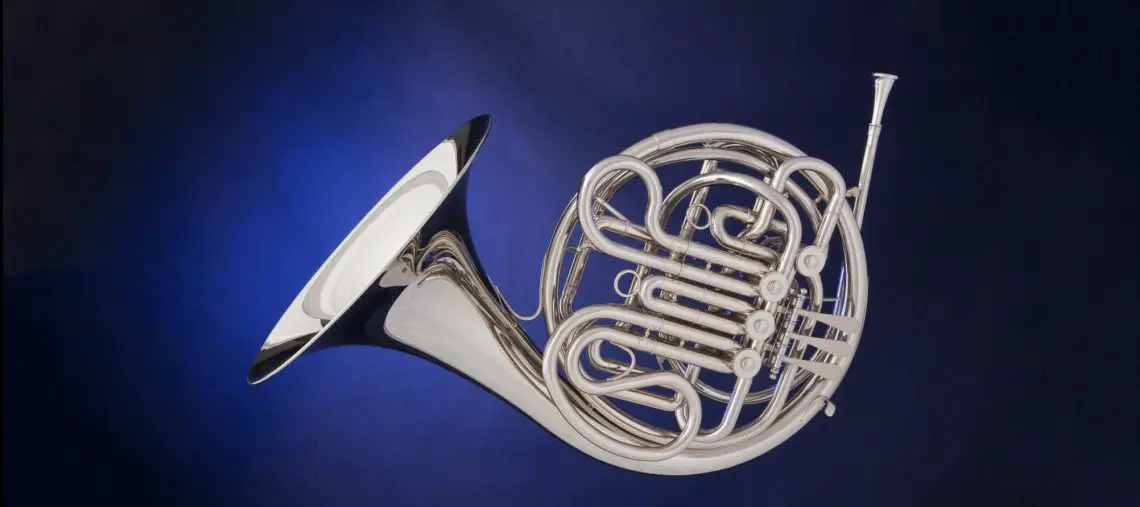



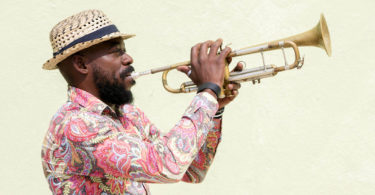

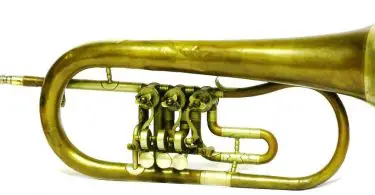
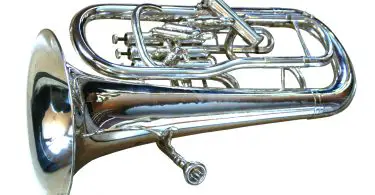
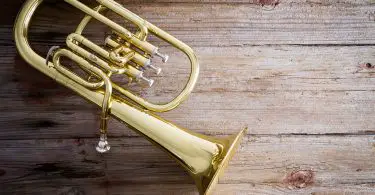
Start the discussion at talk.hearthemusicplay.com